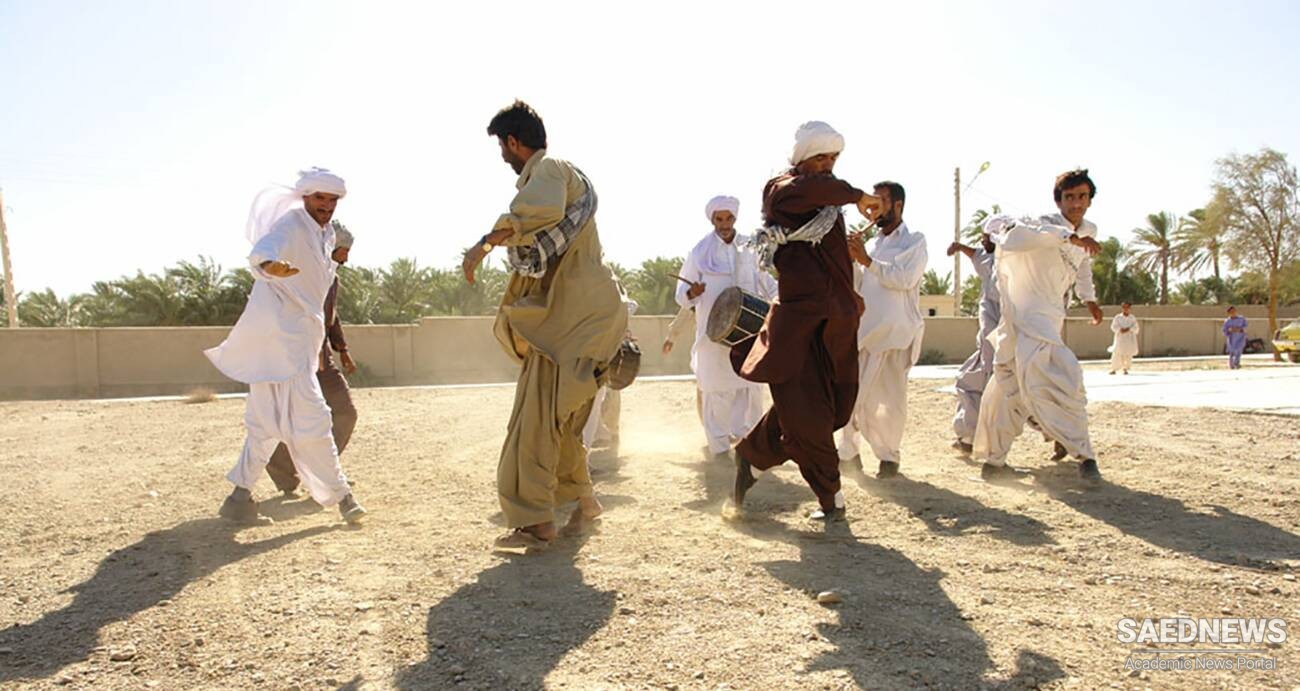Thus, Choob Bazi had a martial usage, in addition to bringing the people together in various ceremonies and it is known as the presentation of the role of people in the scene of battle and a symbol of Sistan historical background. Sistani ritual dance with more than 1000 years antiquity, in addition to dramatic aspect, has some specific functions which show the identity of locals along with some local musical instruments such as Dulcimer, Qichak, Chogir and Drum.
The Sistani dance is divided into two groups named “Chapy dance” (feminine dance) that its special form is intermittent banging foot on the ground by following up the specific beats of Dayereh and “sword or wood dance” (masculine dance) which were performed by a group of men and women in the past. Moreover, the masculine dance in Sistan is also divided into “Single wood” and “double wood” dances. Double wood dance is done by two dancers and two woods and in the single wood dance, a group of dancers dance only by one wood in their hand in a circular queue with the population sitting around to encourage the dancers.
Sword dance is one of the most original Sistani dances in the southeast of Iran and wood dance of Sistan is one of the famous and most popular dances of people in Sistan region and what is known as Choob Bazi in Sistani dance is the continuation of Sword dance among ancient Sistani people in order to show their defend power against of fighters. The wood and sword folk dances are currently done in most of the Sistan events in different occasions such as wedding parties, feasts and etc.
There are some hidden secrets and meanings behind each kind of sword dance. Sword dance which starts with a kind of a spiritual dance and Samaye whirling originally means the whirling around the axis which is taken from the philosophy of Sama' dances. Hands pointing to the sky and regular whirling have also specific meanings. Sword Ritual dance in Sistan has a defense aspect and is the story of two champion's face to face fight with each other. When an opponent falls, the competitor invites him to stand up and let him stand up; this way if treatment remembers the Rostam bravery (Iran’s mythic hero) who woke his sleeping enemy up and then fights with him. When one of them fails the musicians plays the Surena and Drum for the winner. Rhythemic movements, dancers' circular queue and circular turning (the symbol of fertile ground) is operated like an evoking and shows the unity of persons in a society
All the elements of Choob Bazi such as clothes, color, sword,wood and etc., are formed properly based on the Sistan culture, thus there is a mutual relationship between scarf (Languteh in Sistani dialect) and the complete coverage form of head and nose. Indeed, this coverage is used to protect and prevent dust and the winds known as “one hundred and twenty days wind” to entr the mouth and nose.. Loose clothes, white color and the clothing materials are appropriate to desert climatic conditions and are inducers of the people’s happiness. The belt of traditional clothes in Sistani's sword or wood dance means the preparation against the unexpected situation like the enemies' attack due to the Sistan historical background. This dance had an important ritual and religious magic meaning and follows the same role in the primary beliefs of tribes as the role had the prayer advanced cultures. The murals in Khaje Mountain, in Sistan & Baluchestan, which are related to Ashkani and Sassanid eras show actually the music traditions, ceremony, sword dance and fight in this region of Iran at that time.


 Khorasani Dance (Choub Bazi)
Khorasani Dance (Choub Bazi)














































